13 Ways to Leverage Intent Data for B2B Sales

13 Ways to Leverage Intent Data for B2B Sales
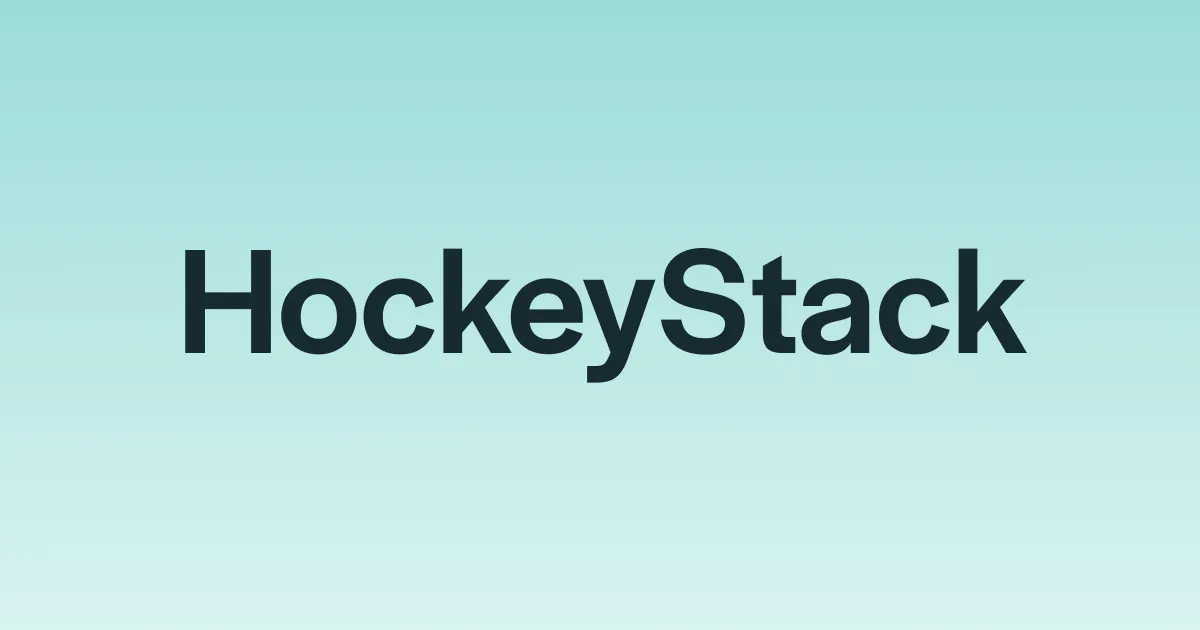
You’ve got access to intent data. Maybe it’s 6sense. Maybe it’s Bombora, UserGems, or ZoomInfo. You can see which accounts are researching your category, comparing vendors, or revisiting key pages on your site.
But despite all that insight, your sales process hasn’t really changed, and pipeline is still soft. The problem is that most teams collect intent data but don’t operationalize it. And as a result:
- Reps see a spike in intent but don’t know if it means research or decision-stage interest (so they either jump in too early or miss the window entirely)
- High-intent accounts sit in your CRM for 5-7 days before anyone reaches out (while competitors strike within hours)
- Signals live in siloed dashboards or weekly spreadsheets, with no defined playbook for who handles what, when, or how
This gap between having buying intent data and using it properly is costing you deals.
Below, we’ll cover 13 ways you can leverage your intent data for B2B sales, from how to spot real buying behavior to catching the accounts while they’re still warm. If you’re sitting on signals and not seeing pipeline, this is where to start.
1. Identify In-Market Leads
The first step is to separate prospects who are actively researching solutions from those who might buy "someday." Intent data shows which accounts are consuming content about your category and actively visiting competitor websites.
You can then prioritize accounts that are actually in-market right now. Reps can stop wasting time on accounts that are months away from a decision (or not buying at all) and start building pipeline with companies already moving.
How to implement:
- Use intent monitoring tools to track when prospects research keywords related to your product category, competitors, or industry problems
- Create intent score thresholds that automatically flag high-priority accounts (typically 70+ on most platforms)
- Use firmographic filters (industry, revenue, headcount) to prioritize signals only from accounts that match your TAM and can actually buy from you
- Cross-reference new intent activity with historical CRM data. If the account has been engaged recently or is in a closed-lost stage, route it accordingly instead of treating it like net-new
Example: A marketing automation platform notices a manufacturing company's IT team has been heavily researching "lead scoring algorithms" and "B2B email deliverability" over the past 10 days. They downloaded multiple guides and visited competitor comparison pages. Even though this company wasn't on their target prospect list, the intense research activity now flags them as a high-priority lead.
PRO TIP: Most intent data tools only show you part of the story. Either what prospects do on your website OR what they research elsewhere, but rarely both together. Platforms like HockeyStack combine first and third-party data and actually show you exactly why each account scored high or low, instead of giving you mysterious black box numbers.
2. Personalize Cold Outreach
Generic cold emails get deleted instantly, but intent data gives you the context to write messages that feel warm. Instead of leading with generic company achievements or pain points, you can reference the specific solutions they've been evaluating or problems they're actively trying to solve.
Reps should know:
- What topic or problem are they showing the most interest in right now?
- Which competitor pages or assets have they interacted with?
- Where might they be in their buying journey, just browsing or actively comparing?
- Who at the company is likely driving that behavior, and what do they care about?
- What value can you add to this message that Google or their peers haven’t already?
The more your message matches their current headspace (not just your sales agenda), the better shot you have at getting a reply.
How to implement:
- Reference the specific topics they've been researching in your subject line and opening paragraph
- Send relevant case studies or resources that match their current evaluation stage rather than generic product pitches
- Customize your tone based on intent urgency (accounts with recent spikes get more direct approaches)
- Use different email templates for different intent categories (problem research vs. vendor comparison vs. implementation planning)
- Time your outreach within 24-48 hours of intent spikes to catch them while the topic is top-of-mind
Example: Instead of "Hi, I'd love to show you our CRM solution," a sales rep sees that the prospect has been researching "CRM data migration challenges" and writes ---> "Hi Sarah, noticed your team's been looking into CRM migrations. We just helped a similar SaaS company migrate 50,000 contacts without losing any data. Here's how they avoided the common pitfalls." The prospect is more likely to respond because the message directly tackles her current concern.
PRO TIP: HockeyStack's Nova AI sales assistant “lives” inside your CRM and can instantly generate personalized outreach based on a prospect's entire buyer journey. Nova pulls from CRM data, call transcripts, emails, and intent signals to write relevant sequences on demand. You can ask Nova, "What should I send to Pied Piper based on their recent activity?" and get custom messages that reference their specific research behavior and funnel stage.
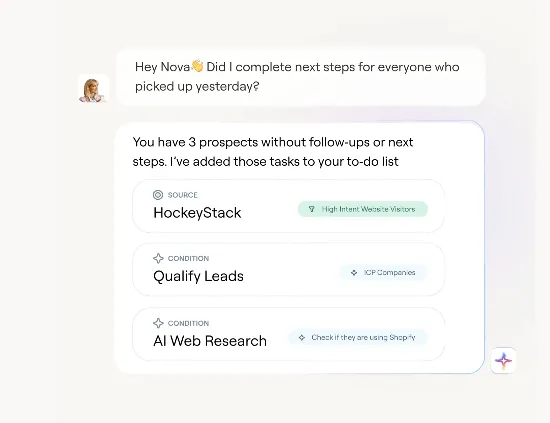
3. Create Competitive Plays
The worst sales conversations start with "so, we've been evaluating a few different options..." and you realize you're three months behind in a race you didn't even know was happening. Intent data gives you a front-row seat to your prospect's comparison activity and alerts you when they start researching competitors.
And the moment you see someone hitting competitor pricing pages or downloading "vendor comparison" guides, you can jump in with your strongest differentiators while they're still forming opinions.
How to implement:
- Set up specific alerts for competitor-related intent signals like "[Competitor] pricing," "[Competitor] reviews," or "[Competitor] alternatives"
- Create competitor-specific battle cards and comparison assets that you can quickly deploy to tackle common objections
- Develop case studies and testimonials from customers who switched from each major competitor to use in competitive situations
- Partner with customer success to find accounts that show competitive research behavior and offer to connect them with similar customers for peer validation
Example: A cybersecurity company sees that Pied Piper is researching "CrowdStrike alternatives" and "endpoint detection pricing comparisons." Instead of a generic sales pitch, they send a case study titled "How Wayne Enterprises Cut Security Costs 40% While Improving Threat Detection" that subtly demonstrates their cost advantage and superior detection, without mentioning CrowdStrike by name.
PRO TIP: You can use HockeyStack's reverse journey analysis to track competitor research backwards from your closed-won deals and see exactly which competitive content, comparison pages, or competitor mentions influenced your buyers throughout their journey. This lets you spot the most successful competitive touchpoints that convert prospects, so you can replicate those winning plays across your entire pipeline.
4. Accelerate Account-Based Marketing (ABM) Campaigns
B2B SaaS companies average 2,879 ads or channel impressions to close a deal, but traditional ABM strategies treat impression #1 the same as impression #2,500. But with intent data, you can move away from this spray-and-pray approach.
Instead of blasting the same generic ad to all 500 accounts on your list, you can create dynamic marketing campaigns that serve different messages based on each account's specific research behavior and buying stage. You stop paying premium CPMs to educate prospects who aren't ready and start intercepting potential buyers during their decision-making moments.
How to implement:
- Build intent-based account tiers where Tier 1 gets your highest-touch campaigns (accounts with 70+ intent scores), Tier 2 receives automated nurture sequences (40-69 scores), and Tier 3 stays in awareness-building (under 40)
- Create separate ad campaigns for different intent levels—awareness-stage messaging for early research, comparison content for vendor assessment, and urgency-driven creative for high-intent accounts
- Route intent-qualified accounts into high-touch plays with SDRs and AEs looped in early
- Use retargeting pixels combined with intent data to serve personalized ads based on both website behavior and third-party research activity
Example: Your team notices five target accounts in the finance vertical are spiking on “B2B revenue attribution” and “multi-touch reporting.” You swap out your current ad creative for these accounts with messaging that focuses on attribution gaps and loop in AEs with warm outreach that hits their specific research focus.
PRO TIP: HockeyStack's ABM scoring uses website data, first and third-party intent, firmographics, and historical sales journey data to automatically tier your accounts. You can create dynamic account lists based on these comprehensive scores and sync them directly to LinkedIn and Display Network, so your ad spend automatically follows the hottest prospects.
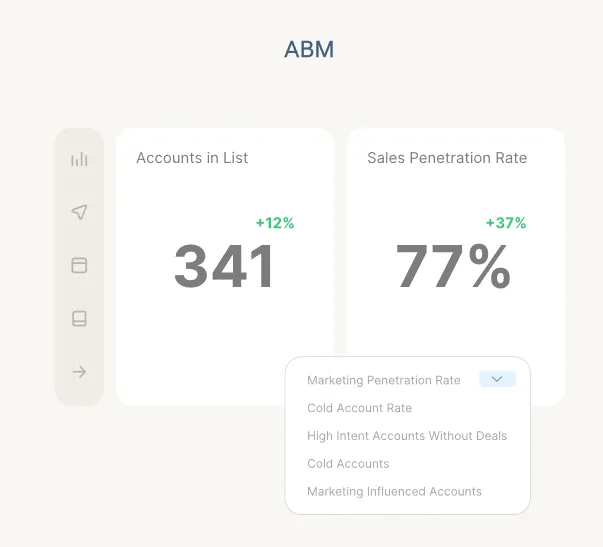
5. Create Effective Retargeting Campaigns
Most retargeting campaigns treat someone who spent two seconds on your homepage the same as someone who downloaded three whitepapers and visited your pricing page twice.
But intent-powered retargeting lets you serve hyper-relevant ads that pick up the conversation where their website session left off. You can move from generic "Come back and learn more" ads and show your prospects the relevant content or solution area they were most interested in.
How to implement:
- Segment retargeting audiences based on specific page visits, content downloads, and research topics rather than just "visited website" broad targeting
- Build lookalike audiences based on your highest-intent website visitors rather than all traffic to reach similar prospects actively researching your category
- Use buyer intent data to adjust ad frequency and bidding, and then show more aggressive campaigns to high-intent visitors and reduce spend on casual browsers
Example: The marketing team notices a handful of target accounts suddenly interacting with pages about multi-touch attribution, plus a few clicks on their competitor’s G2 profile. Instead of dumping them into the usual retargeting flow, they create ad creative that calls out the complexity of attribution modeling and offers a 2-minute walkthrough of how they streamline it. Within days, those accounts start showing up in demo pipelines.
PRO TIP: Don't assume your retargeting campaigns are working just because people are clicking when you can use lift analysis to prove they're actually driving incremental conversions. HockeyStack's lift reports measure the incremental impact of retargeting by comparing conversion rates between people who saw your retargeting ads versus those who didn't, so you can see if retargeting is genuinely driving more sales or just taking credit for conversions that would have happened anyway.
6. Improve Lead Scoring
Your marketing automation platform confidently declares that Richard from Pied Piper is "hot" because he opened three emails and downloaded an ebook, while completely ignoring that he spent the last week researching your biggest competitor's pricing and implementation process.
Intent data exposes this blind spot because it tracks whether your prospects are actively building business cases, comparing vendors, or researching implementation issues across the broader market. When you have this data, you can prioritize those that are actively in the buying cycle.
How to implement:
- Work with your B2B marketing operations team to add "Intent Score" as a field in your CRM and marketing automation platform
- Weight bottom-funnel research activities like competitor pricing comparisons and implementation guides much higher than educational content downloads in your scoring algorithm
- Route high-intent prospects directly to sales the moment they cross your threshold instead of making them wait in traditional MQL nurture sequences
- Build time decay into your scoring model so intent signals automatically lose points after 30-60 days, and your sales team stays focused on current buying activity
Example: A CRM vendor realizes their lead scoring is completely backwards. Prospects who download multiple ebooks and attend webinars have a 12% close rate, while prospects that show external research activity around "sales process automation" close at 43%. They rebuild their scoring model to weight external research signals over internal engagement, which increases qualified pipeline by 65%.
PRO TIP: HockeyStack uses predictive models to analyze all your historical closed-won journeys and models intent based on correlations with those past successful deals. The custom scoring models are fully adjustable and explain why each account is prioritized, so your sales team knows what they’re dealing with.
7. Trigger Timely Follow-Ups
The difference between a "thanks, but we're not ready" and "let's schedule a call" often comes down to when you reach out. Intent data tells you exactly when prospects go into buying mode, so you can follow up while they're actively researching instead of sending random "checking in" emails that get ignored.
When you can see a prospect has just downloaded competitor pricing guides or started researching implementation timelines, you know it's the right time to act.
How to implement:
- Set up real-time alerts so your sales team gets notified within hours when target accounts spike in online activity or hit high-intent pages like pricing or demos
- Escalate your sales outreach urgency based on intent intensity (casual browsers get standard emails, while prospects in evaluation mode get immediate phone calls)
- Time your follow-ups based on industry buying cycles so you're not rushing enterprise deals or moving too slowly with smaller companies
Example: A sales rep notices their target account's IT team suddenly starts researching "cloud migration timelines" after months of quiet. Instead of waiting for their next scheduled quarterly check-in, they instantly reach out with a relevant case study about similar companies' migration experiences and offer to connect them with a technical specialist. They schedule a demo for the same week.
PRO TIP: HockeyStack sends real-time Slack alerts when target accounts show high intent (e.g., visiting your pricing page or checking your demo), so your sales team can respond while prospects are still hot instead of discovering the activity days later in a weekly report. You can customize the parameters that define "high-intent" for your business and get context-rich insights delivered instantly to the right rep.
8. Enable Hyper-Relevant Sales and Marketing Alignment
The classic sales and marketing blame game exists because both teams work with incomplete information. Marketing sees form fills and email opens while sales sees conversations and objections, but neither understands what prospects research when nobody's watching.
Intent data becomes the shared language that bridges this gap and shows both teams which accounts are actually progressing through the buying stages. When marketing and sales can see the same research patterns and buying signals, they can start coordinating around real opportunities.
How to implement:
- Create shared dashboards that show both teams which intent signals correlate with closed deals, so everyone focuses on the same high-value behaviors
- Build lead handoff processes based on intent thresholds rather than traditional MQL criteria
- Set up regular alignment meetings where marketing shares which intent-driven campaigns are generating the most sales-ready leads and sales provides feedback on lead quality
- Use intent data to create joint account plans where marketing nurtures early-stage research signals while sales focuses on prospects that show evaluation-stage intent
Example: Marketing spotted that accounts that spike on intent topics like “multi-touch attribution” converted faster when sales followed up within 24 hours. They adjusted the handoff so marketing efforts nurture early-stage signals, while sales jumps in on late-stage intent. Time-to-opportunity dropped by nearly 50%.
PRO TIP: HockeyStack breaks down silos by consolidating all your sales and marketing data into shared dashboards that both teams can access, so everyone's looking at the same buyer journeys, attribution models, and pipeline metrics. When marketing can see exactly which campaigns led to closed deals and sales can track the full buyer journey before handoff, alignment happens naturally because you're all working from the same playbook.
9. Improve Sales Forecast Accuracy
Intent data helps you spot early signals that an opportunity is heating up, slowing down, or quietly going dark, long before it shows up in the CRM. When you track these signals over time, sales leaders can forecast with more confidence and catch specific risks earlier in the pipeline.
How to implement:
- Sync intent scores and research activity directly into your CRM opportunity records so sales reps can see buying signals alongside traditional deal information
- Build forecast dashboards that show intent trends mapped against pipeline stages, so it’s easier to spot deals with strong momentum versus those losing steam
- Ask sales managers to review intent data during forecast calls, where any "commit" stage deal with declining research activity should lead to a deeper investigation
- Set up automated alerts when high-value deals show sudden drops in intent signals and give sales teams early warning to re-engage before deals go cold
Example: A company notices their Q3 forecast was inflated with deals stuck in the "negotiation" stage for months. After setting up intent data, they find out that prospects in half of those deals had stopped researching their solution category entirely, while the other half were actively comparing implementation partners and researching contract terms (clear signals of which deals would actually close).
PRO TIP: HockeyStack's machine learning models analyze your historical campaigns, current pipeline health, and revenue targets to tell you exactly where to increase spend and where to cut back. Instead of guessing whether to double down on LinkedIn ads or move budget to content marketing, you get clear recommendations based on what's actually driving revenue for your business (not industry averages or best practices that might not apply to you).
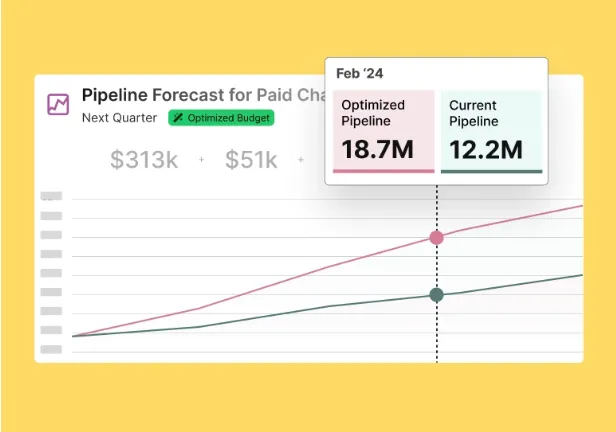
10. Reduce Churn Risk in Existing Accounts
Intent data is one of the best early warning systems you’ve got for customer retention. If a current account suddenly starts interacting with competitor content or searches for “[Your specific product] alternatives,” something’s off.
Maybe they’re unhappy. Maybe a new stakeholder is questioning the value. Either way, those signals usually show up before the angry email or surprise cancellation. Spotting them early gives your team a shot at stepping in.
How to implement:
- Build dedicated intent tracking models specifically for your customer base that monitor research activity around competitors, product alternatives, and migration-related content
- Set up keyword monitoring for warning signals like "[competitor] vs. [your product]," "how to export data," "contract cancellation," and solution switching guides
- Configure automatic alerts that create urgent tasks for customer success managers when accounts show concerning research patterns combined with declining product usage
- Create tiered response workflows based on intent severity, from automated check-in emails for mild competitor research to immediate CSM calls for active migration planning
Example: A SaaS company noticed that one of their largest enterprise clients had multiple team members researching "data migration tools" and visiting competitor pricing pages over a two-week period. Their customer success team proactively reached out, discovered the client was frustrated with slow data processing speeds, and worked with engineering to set up a solution that retained the $200K annual contract.
PRO TIP: HockeyStack's account-level journey tracking shows you every touchpoint for each stakeholder in your customer accounts, so you can spot when engagement patterns change or when they start researching your competitors. Instead of waiting for your customer success team to discover problems during quarterly reviews, you'll see warning signs in real-time and can intervene before they make switching decisions.
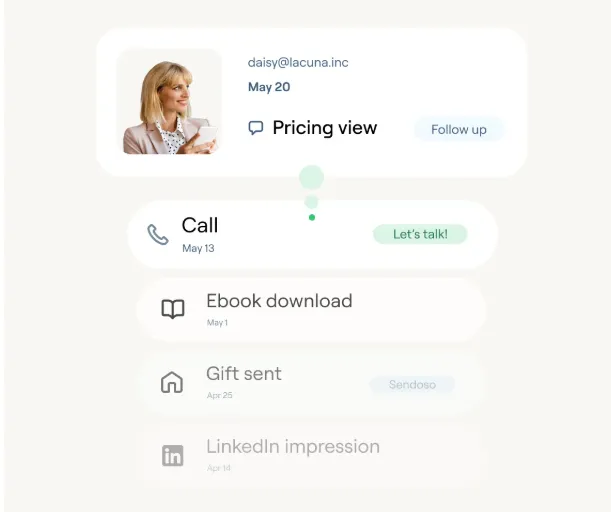
11. Optimize Content for Upselling/Cross-Selling
When you blast existing customers with generic "upgrade to enterprise" emails, you're not tackling any specific pain points. Intent data fixes this because it shows you what customers are already researching.
For example, they may be looking into advanced automation, exploring integrations, or checking out industry-specific solutions that happen to match your premium features. With this data, you can create content that answers the exact questions they're already asking.
How to implement:
- Analyze which content topics lead to successful upsells in your customer base and create more content around those high-converting themes
- Monitor existing customers for research activity around advanced features, integrations, or expanded use cases that show readiness for premium offerings
- Create content libraries organized by expansion signals (e.g. ROI calculators for those exploring enterprise features)
Example: A project management software company notices their mid-tier customers frequently research and "team reporting features." They created a content series specifically tackling these topics and found that customers who interacted with this content were 3x more likely to upgrade to their enterprise plan within 60 days compared to those who received standard upsell campaigns.
PRO TIP: HockeyStack's cohort analysis lets you segment customers by product usage, company size, industry, or any custom criteria to see exactly how each group interacts with your upsell content. You might discover that enterprise customers who engage with integration guides have 3x higher expansion rates than those who don’t, while SMB customers respond better to ROI calculators.
12. Refine Sales Territories and Rep Assignments
Most sales territories are built using rough guidelines (e.g., region, company size, or number of accounts), but that doesn't always match where the actual demand is.
Intent data gives you a live feed of where interest is picking up, whether it’s a specific vertical, market segment, or pocket of accounts that suddenly care about what you sell. When you use that data to shape rep assignments, you stop spreading your team too thin and start putting coverage where it counts.
How to implement:
- Analyze which types of intent signals each rep converts best on—some excel with early-stage research accounts, while others close competitive evaluation scenarios more successfully
- Create territory assignments based on account intent levels rather than just geography or company size, so your top performers can get the highest-intent prospects
- Build territory rules that consider both traditional factors like industry expertise and modern signals like account engagement patterns and competitive research intensity
Example: A company notices that one of their reps has a knack for closing deals when prospects are actively comparing competitors, while another rep is great at nurturing accounts that are just starting to research solutions. Instead of sticking with their old geographic territories, they start assigning accounts based on what prospects are actually researching. The rep that thrived on competitive deals saw his close rate jump from 15% to 28%, while the consultative rep went from 12% to 22%.
PRO TIP: HockeyStack tracks individual rep performance alongside account signals, so you can see which reps book more meetings, close higher-value deals, and convert different types of prospects most effectively. You’ll see which rep thrives with competitive prospects versus those who excel with early-stage accounts, and then create territory assignments that actually maximize your team's performance.
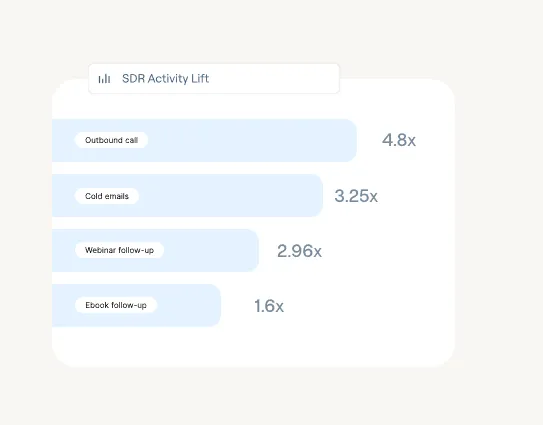
13. Set Your Channel Partners Up for Success
Your partners can’t sell what they can’t see. Most of them are operating without the insight your internal team gets. There’s no visibility into which accounts are in-market, what content’s working, or who’s comparing vendors.
When you extend intent data to partners, you equip them to prioritize the right accounts, fix their messaging, and close faster.
How to implement:
- Build dedicated portal views for each partner that display high-intent accounts specifically within their assigned territory, industry vertical, or customer segment
- Train partners on how to read intent signals and use research insights to create more relevant conversations
- Create co-branded email templates and sales materials that reference specific intent topics like implementation planning, competitive research, or GDPR compliance requirements
- Set up real-time notifications that alert partners when their target accounts show sudden spikes in buying activity or start researching purchase-related topics
Example: A SaaS company notices several accounts in their EMEA territory are spiking on competitor research and “integration with [Tool]” topics. They then send the partner a short list of surging accounts along with messaging instructions and key product differentiators. The partner jumps on it, books three meetings that week, and closes one of the deals in under a month, which is much faster than their usual cycle.
PRO TIP: HockeyStack's Channel Partners Dashboard tracks which partners drive the most revenue and outlines funnel leaks. You can also measure marketing's influence on channel partner deals through lift analysis and see win rates, sales velocity, and contract values compared to non-partner deals.

Editor note: That screenshot shows just a slice of the dashboard. The full dashboard also includes actionable insights into channel revenue by type (reseller, affiliate, referral), lead volume from each partner type, pipeline and deal value compared to goals, conversion rates across funnel stages, and performance comparisons between partner-sourced and non‑partner deals.
Start Leveraging Your Intent Data with HockeyStack
HockeyStack is a GTM AI platform that combines first-party and third-party intent data with complete buyer journey tracking, so you can see exactly what prospects are researching and when they're ready to buy.
While black-box intent solutions just show you mystery scores, HockeyStack explains exactly why each account is high-intent and connects those signals to actual revenue outcomes.
Here’s exactly what you can do with HockeyStack:
- Connect first-party website behavior with third-party research signals to get the complete picture of prospect intent instead of relying on partial data from single data sources
- Build dynamic target account lists that automatically update based on real-time intent signals and sync directly to LinkedIn, Google Ads, and your other marketing platforms
- Set up instant Slack alerts when high-value prospects hit your ideal intent thresholds so your sales team can reach out while prospects are actively researching
- Create lift reports that prove which intent signals drive revenue versus those that just look impressive in dashboards
- Track account-level journeys for every stakeholder in your target companies to understand the complete buying committee's research behavior
- Generate AI-powered insights with Odin that instantly answer questions like "which accounts are most likely to convert this quarter" based on their intent patterns
You can finally score accounts using predictive models trained on your actual closed-won deals instead of arbitrary point systems that treat all activities equally.
HockeyStack shows you the difference between someone who downloaded your whitepaper out of boredom and someone who's actively building a vendor shortlist with your competitors on it.
Book a demo and finally give your revenue team the unfair advantage they’ve been waiting for.
FAQs
What is intent data?
Intent data is behavioral information that shows which accounts are actively researching topics related to your product or industry.
You can use it to outline companies that are actively evaluating products in your category, what specific topics they're researching, and how urgently they're moving through their buying process.
What are the different types of intent data?
There are three main types of intent data sources that you can track:
- First-party intent data comes from prospects' interactions with your own digital properties, like your website, emails, content downloads, and product trials. This data is the most accurate since you control the tracking and context.
- Second-party intent data is first-party data shared between partner companies, such as when complementary software providers exchange insights about mutual prospects.
- Third-party intent data tracks prospects' research behavior across the broader web, including visits to industry publications, competitor sites, and review platforms like G2. This shows when prospects are actively comparing solutions or researching topics related to your category, even when they haven't engaged with your brand yet.
How is intent data collected?
There are several ways to collect intent data:
- Website tracking scripts monitor visitor behavior on publisher sites and track which pages prospects visit, how long they stay, and what topics they research. These scripts use cookies (or cookieless fingerprinting) to identify companies and build research activity profiles for the right people.
- Third-party data partnerships work with publishers, high-quality review sites, and industry platforms to track when prospects research relevant topics across the web. Intent data providers like Bombora collect this data from thousands of websites to show you which accounts actively consume content in your category.
- CRM and sales tool integrations where some platforms pull signal data from emails, call transcripts, or calendar activity to spot changes in buying readiness based on rep-customer interactions.
- IP address resolution uses reverse IP lookup to outline companies behind anonymous website visits and research activity. This technology matches internet traffic back to specific businesses, even when individual users don't provide contact information.
- Social media interactions and review site monitoring track marketing strategies on platforms like LinkedIn, G2, Capterra, and industry forums where prospects research solutions and read reviews.
How is an account with high purchase intent different from a marketing qualified lead (MQL)?
A marketing qualified lead (MQL) is someone who interacts with your marketing content and meets specific criteria like job title, company size, or form submissions, but this doesn't tell you if they're ready to buy.
An account with high intent actively researches solutions in your category across multiple platforms, compares vendors, and shows behavior patterns that match actual purchase decisions.
While an MQL might download your ebook out of curiosity, a high buyer intent account researches implementation timelines, pricing models, and competitor alternatives.
How accurate is intent data?
Intent data isn’t perfect, but when you combine it with firmographic filters and first-party signals, it can reliably predict which accounts are in a buying cycle. Accuracy also improves when you track multiple signals over time instead of relying on one-off spikes.
Does using intent data mean my reps should call every account that shows a spike?
Not every spike is a green light to call. Before any specific sales strategies, reps should always first analyze the context of the intent.
- What specific topics or keywords are they researching? Is content consumption getting stronger?
- Is it early-stage (e.g., "what is ABM lead generation?") or late-stage (e.g., "HockeyStack pricing")?
- Do they even match your ideal customer profile (ICP)? Are decision-makers getting involved?
Your reps should act when the signals stack up within the target audience, not when they see a single blip.
A sudden spike in competitive research might warrant a timely call for potential customers, while early-stage topic research is a perfect opportunity for a personalized email with educational content that strikes specific needs.
How can I measure the ROI of using intent data?
The ROI of intent data can be measured against core sales metrics. You should track improvements in:
- Sales cycle velocity: Measure how much faster deals close when sales teams engage prospects showing active intent signals versus cold outreach.
- Cost per acquisition (CPA): Compare the total cost of acquiring customers through intent-driven campaigns versus other channels.
- Sales team productivity metrics: Measure how B2B intent data affects rep activity metrics like calls-to-meetings ratios, email response rates, and time spent on qualified prospects.
- Pipeline quality and deal size: Track whether intent-influenced opportunities result in larger deal sizes and higher close rates.
- Customer lifetime value (CLV): Track whether customers acquired through intent data show higher retention rates, expansion revenue, and overall lifetime value.
Does this just create another tool that my sales team has to log into?
Not if you choose the right platform. Most intent data tools do create another dashboard for your sales team to check, which often means the data gets ignored or used inconsistently.
However, platforms like HockeyStack sync intent scores, alerts, and account insights directly into your existing CRM, so reps see the information where they already work. The best approach is to find an intent solution that integrates seamlessly with your current sales workflow.
The Beginner’s Guide to SaaS Revenue Forecasting + Revenue Template
Learn essential SaaS revenue forecasting models and best practices. Optimize your forecasts and make informed business decisions.

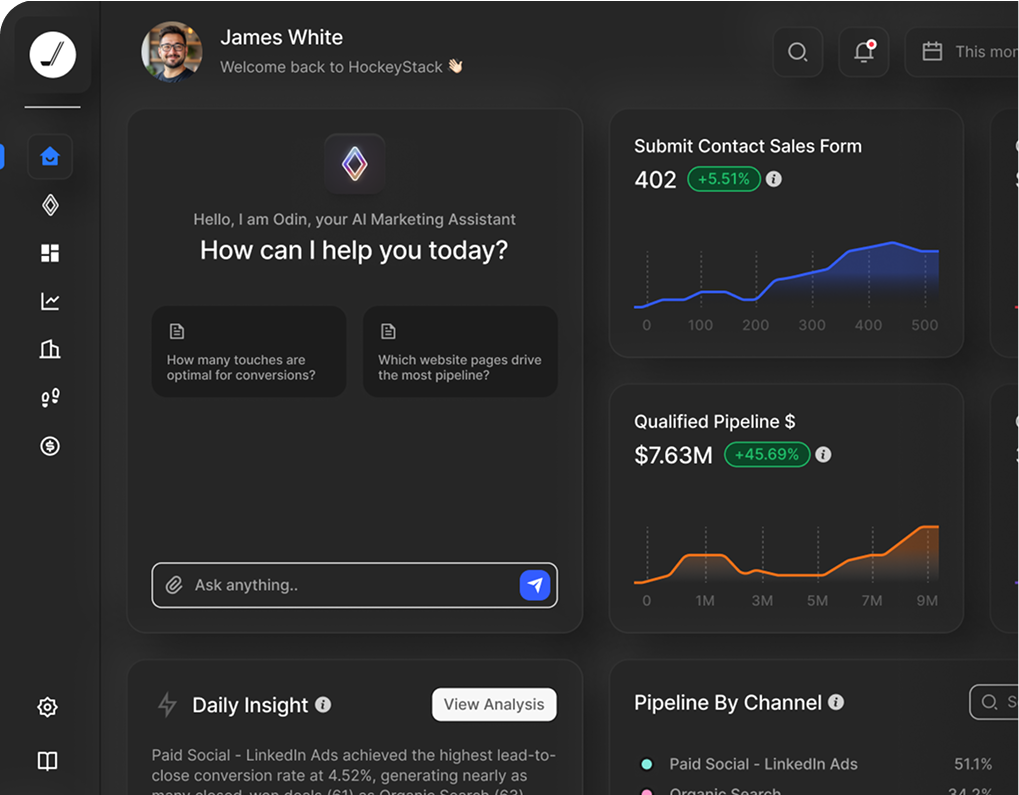
Ready to see HockeyStack in action?
HockeyStack turns all of your online and offline GTM data into visual buyer journeys and dashboards, AI-powered recommendations, and the industry’s best-performing account and lead scoring.
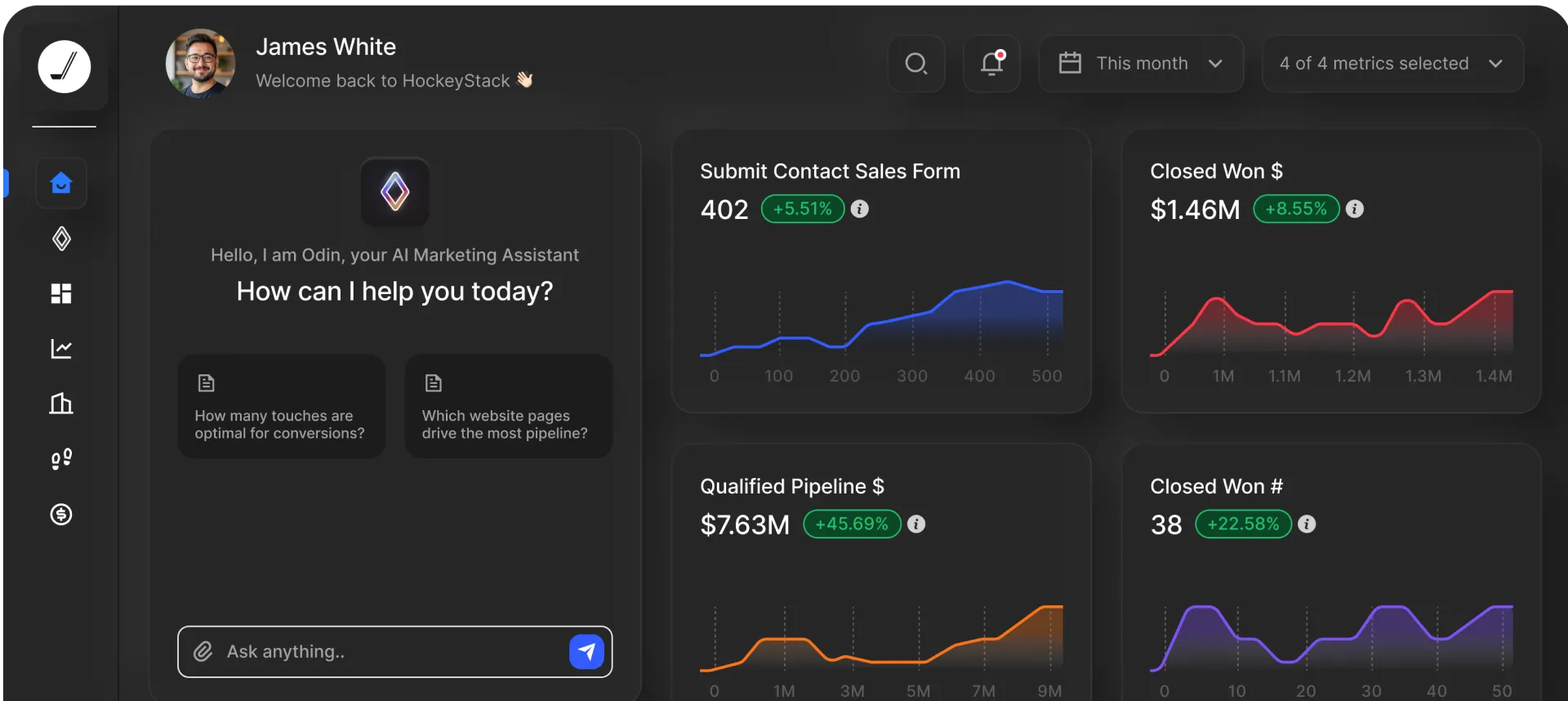
Ready to See HockeyStack in Action?
HockeyStack turns all of your online and offline GTM data into visual buyer journeys and dashboards, AI-powered recommendations, and the industry’s best-performing account and lead scoring.




